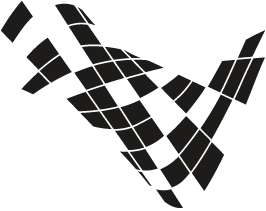I joined the Dynamics Research Group in January 2017, having completed a PhD and EPSRC Doctoral Prize Fellowship on Tidal Energy. During this time I specialised in experimental and computational fluid dynamics, and was awarded an EU grant to use an experimental facility at the University of Florence. Prior to this I completed an undergraduate degree in Mechanical Engineering at the University of Sheffield in 2007, followed by three years’ commercial experience as a renewable energy consultant. I am a Chartered Mechanical Engineer, and remain passionate about Renewable Energy and Engineering education. I am a STEM ambassador, and am part of the Bloodhound Land Speed Record Car STEM scheme, which aims to promote STEM careers to young people.
Research interests:
I am generally interested in energy, whether generating energy from renewable sources or understanding how energy is dissipated through structures with positive or negative impact on the structure itself. In my current and previous work I have used computational simulations such as CFD and FE modelling, but I tend to focus on experimental work, particularly laser measurement techniques. I am experienced in the use of Particle Imaging Velocimetry and Laser Doppler Velocimetry for fluid flow measurement, and in my current role use Laser Doppler Vibrometry as well as accelerometers to measure structural movement. I am also interested in Life Cycle Assessment, the Circular Economy and waste management, and have published papers in this field.
Current research:
I am currently working on the S^3 project; my focus is the study of a number of aircraft tailplanes using a Scanning Laser Doppler Vibrometer (SLDV). The purpose of this work is to understand the variation in response of a number of nominally similar structures to identical excitation. The differences in response of the structures tells us that a population of supposedly similar structures will not all give an identical response, despite all being in a “normal” state. The implications of this result for Structural Health Monitoring are that a population-based SHM system must understand the difference between a normal case variation and a change from a normal to a damaged state. I am also working with undergraduate students on a range of projects, including studying the impact of vibration on a fibre optic cable containment system, and the deformation of a rotating structure over a range of speeds.
I have found that the response of nominally identical structures varies significantly. Over a test frequency range of 0-1000Hz, opposite sides of an aircraft tailplane demonstrate the same mode shapes (the shape formed by the deformed structure at a given input excitation), but these mode shapes occur at different frequencies. In some cases, modes not observed in one structure are seen in another. This variation presents challenges to the machine learning algorithm, which will try to determine whether a previously-unseen structure is in a normal state or not based on the response of a nominally similar structure.
I am now working to test further structures to increase the size of the data set. Further work will also include the introduction of damage to the structures, thus giving data sets for normal and damaged conditions.

Publications:
- Experimental Studies of Turbulent Intensity around a Tidal Turbine Support Structure
- Life Cycle Assessment of a Wave and Tidal Energy Device
- Using Public Transport Can Make Up for Flying Abroad on Holiday: Compensatory Green Beliefs and Environmentally Significant Behavior.
- Tidal Energy Machines: A comparative Life Cycle Assessment.
- Barriers to the Deployment of a 100MW Tidal Energy Array in the UK.

